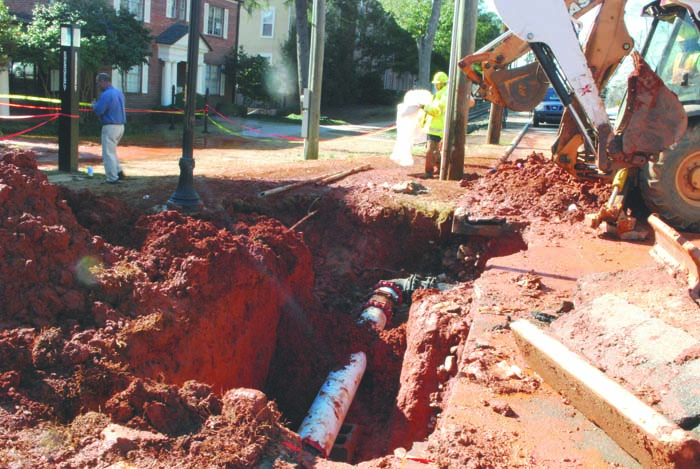Workers kept busy with water main breaks
Published 8:45 am Wednesday, January 11, 2017

- Milledgeville city workers have been kept busy since Monday morning repairing water main breaks along West Greene Street in a residential area of Georgia College. The last of the repairs were made Tuesday afternoon.
MILLEDGEVILLE, Ga. — Separate water main breaks along West Greene Street in Milledgeville Monday morning and early Tuesday inconvenienced some residents, including a number of students at Georgia College.
A boil water advisory was issued by city officials in the affected area between Clarke and Tattnall streets. The advisory will remain in effect until state officials inform city officials that samples of the water in the area are safe for drinking.
Trending
Those under the boil water advisory are reminded that they need to boil any water they use for drinking purposes, cooking or preparing food until further notice.
A drastic change in the temperatures the last couple of days is believed responsible for both of the breaks, which ruptured 10-inch waterlines, according to Kevin Veal, city water and sewer distribution superintendent.
As temperatures climb into the 60s and near 70 degrees by Friday, there is the possibility for additional waterline breaks in the city, Veal said.
“The freezing temperature is not what causes such breaks,” he said. “It’s the temperature change. So, when it freezes in the ground and it’s totally wet around the waterline, it’s just like sitting in ice.”
Veal said the water in the line isn’t freezing. It’s actually in the 50s as it is passing through the pipe.
“The pipe simply can’t take it, and ruptures,” he said.
Trending
The first waterline breaks happened about 6:30 a.m. Monday, while the second one occurred about 1:30 a.m. Tuesday, Veal said.
He described both breaks as severe.
“It was pretty severe,” Veal said, noting that workers had just repaired the first break about 6 p.m. “We worked on that one for about 10 hours.”
Workers were later called out to the same general area to repair a second water main break early Tuesday. Repairs weren’t made on the second break until shortly after 1 p.m. Tuesday.
“We were able to get the entire line pressurized, because we had to kill so many valves just to kill this line,” Veal told The Union-Recorder at the site Tuesday afternoon.
Veal explained that when frigid temperatures sent the mercury plummeting into the low 20s the last couple of days, the amount of water in the ground froze and thus led to both breaks.
“It was a ductile line, which is the best that money can buy,” Veal pointed out. “That’s a top-quality line.”
He said the line was a relatively new line.
“It’s only been here a few years,” Veal said.
When temperatures get that cold, waterlines are more likely to break, Veal said.
He and several city employees worked around the clock during the early morning hours Tuesday and into mid-afternoon before two large pieces of pipe were removed and replaced by new waterline sections.
“I’m proud of each and every one of these workers who worked long, hard hours and helped to make these repairs,” Veal said.
Between eight and nine workers helped to make the repairs.
The water advisory for residents in the affected area remains until further notice.
“There’s really not that many residents effected by the boil water advisory,” Veal said. “Several of the people living in houses in this area are actually fed off a different line — a smaller line. Basically, it was the college.”
When officials at GC first learned of the water main break Monday morning, they began notifying students and staff members. Notices were placed on the doors of college buildings, advising students and staff.
At least one of the buildings on the college campus, directly in front of where the waterlines ruptured, was damaged by water. A damage estimate was not immediately available.
“We had great cooperation with the college,” Veal said.
Several persons who work on the college campus stayed around for several hours to assist city workers, he added.
“Water literally got up to half the length of those red tips,” Veal said pointed out the impact of the damage, which happened in a low-line area. “That’s what led to some of the water going into one of the buildings.”


